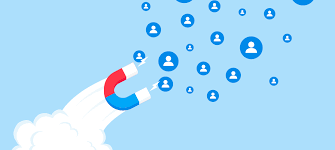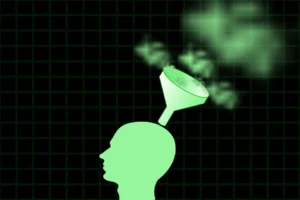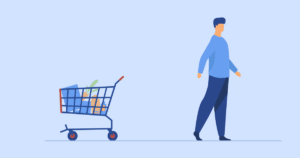
The promise of a Facebook ad funnel is irresistible: targeted ads that pull in high-quality leads, nurture them effortlessly, and convert them into loyal customers. Yet, for most business owners, coaches, consultants, and digital marketers, the reality is far less glamorous. Ads burn through budgets, leads vanish, and sales flatline. Why? Because most Facebook ad funnels are built on shaky foundations, misaligned strategies, and a lack of psychological insight. As a conversion rate optimization specialist, data-driven digital marketer, and strategic funnel consultant, I’ve seen the same mistakes derail countless campaigns. In this guide, I’ll break down why Facebook ad funnels fail and provide actionable, step-by-step solutions to build one that delivers measurable ROI.
The Anatomy of a Failing Facebook Ad Funnel
A Facebook ad funnel is a structured journey that guides prospects from awareness (clicking an ad) to action (purchasing or booking a call). It typically includes three stages: top-of-funnel (TOFU) for awareness, middle-of-funnel (MOFU) for engagement, and bottom-of-funnel (BOFU) for conversion. When a Facebook ad funnel fails, the breakdown often stems from one or more of these critical areas:
- Misaligned Audience Targeting: Ads reach the wrong people, wasting budget and generating low-quality leads.
- Weak Lead Magnets: Offers fail to attract or engage the right prospects.
- Poor Landing Page Design: Pages confuse, overwhelm, or fail to convert visitors.
- Disconnected Funnel Stages: The journey from ad to offer feels disjointed, causing drop-offs.
- Lack of Psychological Triggers: Funnels ignore human behavior, missing opportunities to build trust or urgency.
Let’s dive into each issue, unpack real-world examples, and outline fixes to ensure your Facebook ad funnel drives results.
Mistake #1: Misaligned Audience Targeting
The foundation of any successful Facebook ad funnel is targeting the right audience. Too often, marketers cast a wide net, hoping to “reach everyone.” This approach burns budgets and attracts unqualified leads. For example, a life coach running a Facebook ad funnel targeting “women aged 18–65 interested in personal development” is doomed to fail. Why? The audience is too broad, mixing college students with retirees, each with wildly different pain points.
Real-World Example
A course creator selling a $2,000 leadership program ran a Facebook ad funnel targeting “entrepreneurs.” The ad copy was generic (“Unlock your potential!”), and the audience included freelancers, startup founders, and corporate managers. The result? A 0.5% conversion rate and a $150 cost per lead—unsustainable for a high-ticket offer.
The Fix: Hyper-Specific Audience Segmentation
To fix this, use Facebook’s targeting tools to drill down to your ideal customer. Leverage:
- Lookalike Audiences: Create a lookalike audience based on your best customers (e.g., upload a list of high-value clients to Facebook).
- Interest Layering: Combine interests like “online business” and “ClickFunnels” to target niche groups.
- Behavioral Data: Target users who’ve engaged with similar content (e.g., watched 75% of your video ads).
Action Step: Audit your audience. If your Facebook ad funnel targets a broad demographic, narrow it to a specific segment (e.g., “female entrepreneurs, aged 30–45, interested in online marketing tools”). Test multiple ad sets with slight variations to identify the highest-performing segment.
Mistake #2: Weak or Irrelevant Lead Magnets
A lead magnet is the entry point to your Facebook ad funnel. If it’s generic or misaligned with your audience’s needs, prospects won’t opt in—or worse, they’ll opt in but never engage. Common mistakes include offering low-value content (e.g., a “5 Tips” PDF) or a lead magnet unrelated to the core offer.
Real-World Example
A fitness coach offered a free “Healthy Smoothie Recipes” PDF in her Facebook ad funnel. While it attracted 500 leads, only 10% opened her follow-up emails, and none purchased her $500 coaching program. Why? The lead magnet appealed to casual dieters, not serious fitness enthusiasts willing to invest in coaching.
The Fix: Create a High-Value, Relevant Lead Magnet

Your lead magnet must solve a specific problem and align with your core offer. For example, if you sell a course on scaling e-commerce businesses, offer a lead magnet like “7 Proven Strategies to Boost Your Shopify Store’s Conversion Rate by 20%.” This attracts serious prospects and primes them for your paid offer.
Action Steps:
- Identify Pain Points: Survey your audience or analyze X posts to uncover their biggest challenges.
- Offer Immediate Value: Create a lead magnet that delivers a quick win (e.g., a checklist, template, or mini-course).
- Align with Your Offer: Ensure the lead magnet naturally leads to your core product. For example, a consultant could offer a “Business Growth Audit Template” that ties directly to their consulting services.
For expert guidance on crafting lead magnets that convert, check out HighConvertingFunnels.com, where you’ll find proven templates and strategies tailored to Facebook ad funnels.
Mistake #3: Poor Landing Page Design
Your landing page is the linchpin of your Facebook ad funnel. If it’s cluttered, confusing, or lacks a clear call-to-action (CTA), visitors will bounce. Common issues include slow load times, vague headlines, or CTAs buried under walls of text.
Real-World Example
A digital marketer ran a Facebook ad funnel for a webinar. The landing page had a 10-second load time, a generic headline (“Join Our Free Training!”), and a tiny CTA button at the bottom. The result? A 12% conversion rate—half the industry average of 20–30% for webinar registrations.
The Fix: Optimize for Clarity and Speed
A high-converting landing page is simple, fast, and laser-focused on one action. Follow these principles:
- Clear Headline: Use a benefit-driven headline (e.g., “Discover How to 3X Your Leads in 30 Days”).
- Single CTA: Include one prominent CTA button (e.g., “Reserve My Spot”) above the fold and repeated strategically.
- Fast Load Times: Optimize images and use a tool like Google PageSpeed Insights to ensure your page loads in under 3 seconds.
- Social Proof: Add testimonials or logos to build trust.
Action Steps:
- Use a landing page builder like Leadpages or ClickFunnels for speed and simplicity.
- A/B test headlines and CTAs. For example, test “Get Your Free Guide” vs. “Download Your Growth Plan Now.”
- Ensure mobile optimization—60% of Facebook ad funnel traffic comes from mobile devices.
Mistake #4: Disconnected Funnel Stages
A Facebook ad funnel is a journey, not a collection of unrelated steps. If the ad, lead magnet, landing page, and follow-up emails don’t flow seamlessly, prospects drop off. For example, an ad promising “Double Your Revenue” that leads to a generic email sequence about “mindset” will confuse and alienate leads.
Real-World Example
An e-commerce brand ran a Facebook ad funnel offering a free “Product Launch Checklist.” The ad drove 1,000 clicks, but the follow-up emails focused on unrelated topics like “time management.” Only 5% of leads engaged, and none converted to sales.
The Fix: Create a Cohesive Journey
Map out your Facebook ad funnel to ensure each stage builds on the last. Here’s a framework:
- TOFU (Ad): Grab attention with a specific promise (e.g., “Struggling to Scale? Get Our Free Growth Plan”).
- MOFU (Lead Magnet/Emails): Deliver the promised value and introduce your core offer (e.g., a case study showing how your course helped a client).
- BOFU (Sales Page): Present a clear, compelling offer with urgency (e.g., “Enroll Now—Only 10 Spots Left”).
Action Steps:
- Write ad copy that mirrors your lead magnet’s promise.
- Use email sequences to bridge the gap between the lead magnet and your offer. For example, a 5-email sequence could include: (1) deliver the lead magnet, (2) share a success story, (3) address objections, (4) offer a bonus, (5) create urgency.
- Test retargeting ads for MOFU leads who don’t convert to BOFU.
Mistake #5: Ignoring Psychological Triggers
Humans aren’t robots—they make decisions based on emotions, not just logic. Most Facebook ad funnels fail to leverage psychological principles like trust, scarcity, or social proof, leaving money on the table.
Real-World Example
A SaaS company ran a Facebook ad funnel for a free trial. The ad was data-heavy, listing features like “AI-powered analytics.” The landing page had no testimonials, and the CTA lacked urgency. Result? A 2% trial sign-up rate, despite a compelling product.
The Fix: Leverage Behavioral Psychology
Incorporate these psychological triggers into your Facebook ad funnel:
- Trust: Use testimonials, case studies, or trust badges (e.g., “As Featured on Forbes”).
- Scarcity: Highlight limited availability (e.g., “Only 50 Seats Left for Our Workshop”).
- Reciprocity: Offer a high-value lead magnet to create a sense of obligation.
- Social Proof: Showcase user numbers (e.g., “Join 10,000+ Entrepreneurs Who’ve Scaled with Us”).
Action Steps:
- Add a testimonial slider to your landing page.
- Use countdown timers for limited-time offers.
- In emails, tell stories of customers who succeeded with your product to build relatability.
For advanced strategies on integrating psychology into your Facebook ad funnel, HighConvertingFunnels.com offers expert-led courses and templates to maximize conversions.
How to Build a Facebook Ad Funnel That Works
Now that we’ve covered why Facebook ad funnels fail, let’s build one that works. This step-by-step framework is designed for business owners, coaches, consultants, and digital marketers looking to generate high-quality leads and sales.
Step 1: Define Your Ideal Customer Avatar (ICA)
Start by creating a detailed profile of your ideal customer. Answer:
- What are their pain points?
- What motivates them to act?
- Where do they hang out online?
Example: A business coach’s ICA might be “female entrepreneurs, aged 30–45, running service-based businesses, struggling to scale past $10K/month.”
Step 2: Craft a High-Value Lead Magnet
Design a lead magnet that solves a specific problem and aligns with your core offer. Examples:
- Course creators: “5 Proven Funnel Hacks to Sell Your Course on Autopilot.”
- Coaches: “The 3-Step Framework to Land High-Ticket Clients.”
- E-commerce: “How to Cut Ad Costs by 30% with This Simple Trick.”
Step 3: Build a High-Converting Landing Page
Use a clean, mobile-optimized landing page with:
- A bold headline (e.g., “Get Your Free Revenue-Boosting Checklist”).
- A single CTA (e.g., “Download Now”).
- Social proof (e.g., “Trusted by 5,000+ Business Owners”).
- Fast load times (under 3 seconds).
Step 4: Write Targeted Ad Copy

Create ad copy that speaks directly to your ICA’s pain points. Example:
- Headline: “Struggling to Get Consistent Clients?”
- Body: “Discover the exact system we used to help 1,000+ coaches book high-ticket clients. Grab our free guide now!”
- Visual: Use a relatable image (e.g., a stressed entrepreneur at a desk).
Step 5: Design a Cohesive Email Sequence
Build a 5–7 email sequence to nurture leads:
- Deliver the lead magnet and thank them.
- Share a success story related to your offer.
- Address a common objection (e.g., “Too busy to implement?”).
- Introduce your core offer with a bonus.
- Create urgency (e.g., “Offer Ends in 24 Hours”).
Step 6: Optimize with Data
Track key metrics like:
- Click-Through Rate (CTR): Aim for 2–3% on ads.
- Landing Page Conversion Rate: Target 20–30% for lead magnets.
- Cost Per Lead (CPL): Ensure it aligns with your offer’s price point.
- Email Open Rate: Aim for 20–40%.
Use Facebook’s Ads Manager to A/B test ads, audiences, and landing pages. Adjust based on data, not assumptions.
Step 7: Retarget Drop-Offs
Use retargeting ads to re-engage prospects who:
- Clicked your ad but didn’t opt in.
- Opted in but didn’t purchase.
- Visited your sales page but didn’t convert.
Example: Run a retargeting ad with a testimonial video and a limited-time discount.
Measuring Success in Your Facebook Ad Funnel
A successful Facebook ad funnel isn’t just about leads—it’s about quality leads that convert into sales. Key metrics to track:
- Return on Ad Spend (ROAS): Aim for 3x or higher.
- Lead-to-Sale Conversion Rate: Target 5–10% for high-ticket offers.
- Customer Lifetime Value (CLV): Ensure your funnel attracts customers who return.
If your metrics fall short, revisit your audience, lead magnet, or landing page. Continuous testing is key.
Conclusion
Building a Facebook ad funnel that works requires precision, psychology, and data-driven optimization. By avoiding common pitfalls—misaligned targeting, weak lead magnets, poor landing pages, disconnected stages, and ignored psychological triggers—you can create a funnel that delivers high-quality leads and sales. Follow the step-by-step framework above, test relentlessly, and don’t be afraid to seek expert help. Tools and resources like HighConvertingFunnels.com can provide the templates and strategies you need to take your Facebook ad funnel to the next level.
Start small, optimize often, and watch your Facebook ad funnel transform from a budget-draining disappointment to a revenue-generating machine.



